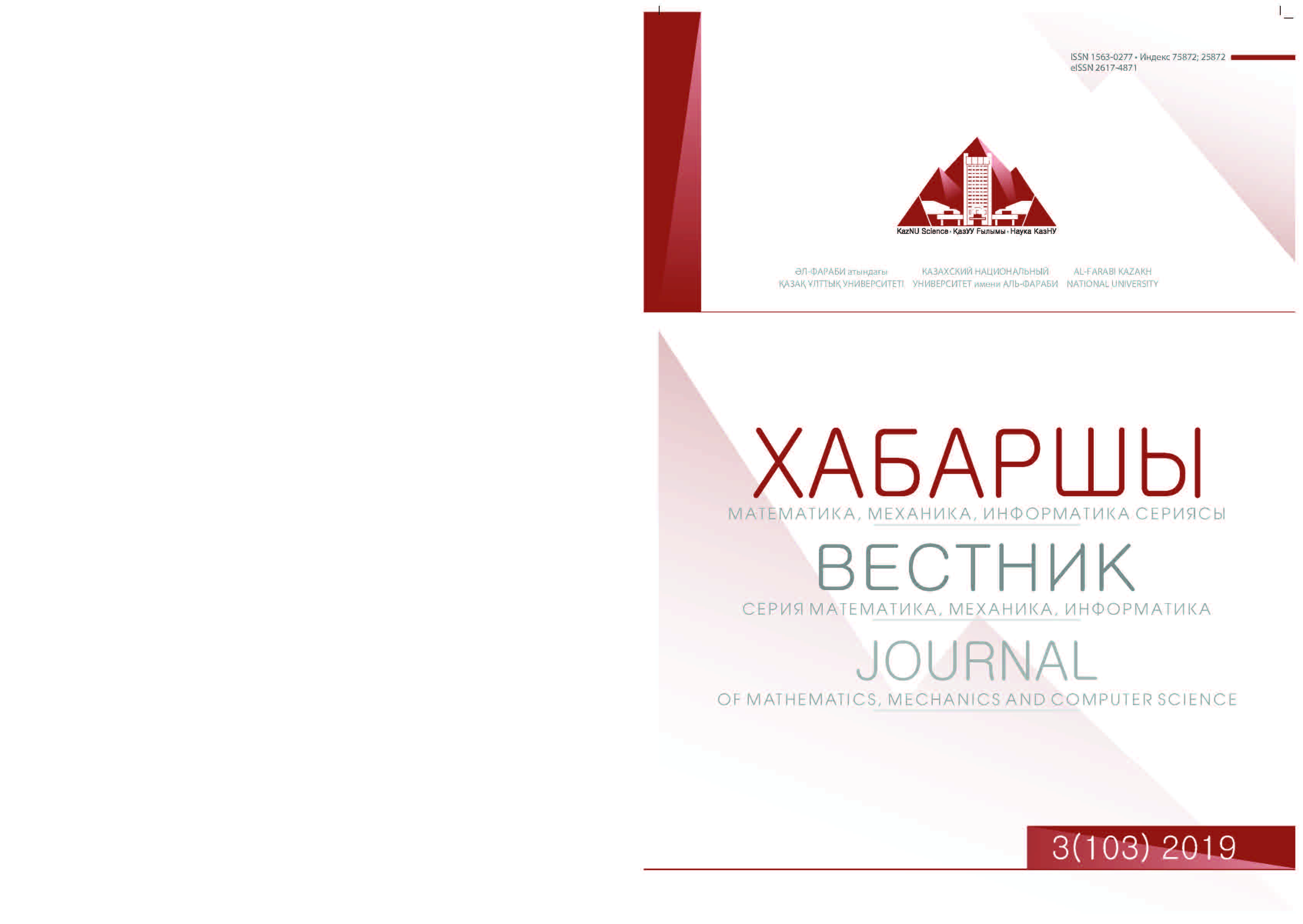The analysis of control systems with a high potential for robust stability on the control object output
DOI:
https://doi.org/10.26577/JMMCS-2019-3-23Keywords:
Control Systems, Closed-Loop Control Systems, Lyapunov Vector Function, Gradient-Speed MethodAbstract
This paper considers control systems with an increased potential for robust stability in the output
of an object in the class of one-parameter structurally stable mappings from catastrophe theory.
The actual problem is the design of control systems that provide in some sense the best protection
against uncertainty in the knowledge of the properties of an object and the instability of control
systems. The ability of a control system to maintain stability under parametric or non-parametric
uncertainty is understood as the robustness of the system. In the general formulation of the
study of the system for robust stability, it is necessary to indicate the restrictions applied to the
fluctuation of uncertain parameters of the control system, under which stability is maintained. A
large number of papers have been devoted to the problem of studying robust stability of control
systems. The study of the dynamic compensator with a high potential for robust stability is
performed by the gradient-velocity method of Lyapunov vector functions. The area of robust
stability of the control system for the object output is obtained in the form of a system of the
simplest inequalities for the matrix of controller parameters and the monitoring device. The
proposed gradient-velocity method of Lyapunov vector functions in the study of the output
control system of the object eliminates complex and ambiguous calculations and canonical
transformations and allows one to determine the region of choice of controller parameters and the
observer, providing the desired transition characteristics of a closed system.
References
[2] Polyak B.T., Scherbakov P.S. Robastnaya ustoychivost i upravlenie [Robust stability and control] (M.: Nauka, 2002): 303.
[3] Dorato P. Vedavalii Recent Advanced in Robust Control (New York: IEEE press, 1990).
[4] Kuntsevich V.M. Upravlenie v usloviyah neopredelennosti: garantirovannyie rezultatyi v zadachah upravleniya i identifikatsii [Management in the face of uncertainty: guaranteed results in management and identification tasks] (K.: Naukova Dumka, 2007): 620.
[5] Beysenbi M.A. Issledovanie robastnoy ustoychivosti sistem avtomaticheskogo upravleniya metodom funktsiy A.M. Lyapunova [Investigation of robust stability of automatic control systems by the method of functions A.M. Lyapunov] (Astana, 2015): 204.
[6] Beysenbi M.A. Metodyi povyisheniya potentsiala robastnoy ustoychivosti sistem upravleniya [Methods of increasing the potential of robust stability of control systems] (Astana, 2011): 292.
[7] Beisenbi M., Uskenbayeva G., Satybaldina D., Martsenyuk V., Shailhanova A. "Robust stability of spacecraft traffic control system using Lyapunov functions" , 16th International Conference on Control, Automation and System (ICCAS), IEEE (2016): 743-748.
[8] Beisenbi M.A., Abdrakhmanova L.G. "Research of dynamic properties of control systems with increased potential of robust stability in a class of two-parameter structurally stable maps by Lyapunov function" , International Conference on Computer, Network and Communication Engineering (ICCNCE 2013). Published by Atlantis Press (2013): 201-203.
[9] Beisenbi M., Uskenbayeva J. "The Research of Robust Stability in Dynamical System" , International Conference on Control, Engineering & Information Technology (CEIT), Sousse, Tunisia. Proceedings of IPCO (2013): 142-147.
[10] Gidmor R. Prikladnaya teoriya katastrof. T.1. [Applied Theory of Disasters. In 2 volumes. Vol.1] (M.: Mir, 1984).
[11] Poston T., Styuart I. Teoriya katastrof i ee prilozheniya [Theory of catastrophes and its applications] (M.: Nauka, 2001)
[12] Andrievskiy B.R., Fradkov A.L. Izbrannyie glavyi teorii avtomaticheskogo upravleniya s primerami na yazyike MATLAB [AL Selected chapters of the theory of automatic control with examples in the language MATLAB] (SPb.: Nauka, 2000): 475.
[13] Kvakernah H., Sivan R. Lineynyie optimalnyie sistemyi upravleniya [Linear optimal control systems] (M.: Mir, 1986): 650.
[14] Andreev Yu.N. Upravlenie konechnomernyimi lineynyimi ob’ektami [Managing finite-dimensional linear objects] (M.: Nauka, 1976): 424.
[15] Rey U. Metodyi upravleniya tehnologicheskimi protsessami [Techniques for managing technological processes] (M.: Mir, 1983): 638.
[16] Beisenbi M., Uskenbayeva G. "The New Approach of Design Robust Stability for Linear Control System" , Proc. of the Intl. Conf. on Advances in Electronics and Electrical Technology-AEET (2014): 11-18.
[17] Beisenbi M., Yermekbayeva J. "Construction of Lyapunov function to examine Robust Stability for Linear System" , International Journal of Control. Energy and Electrical Engineering (CEEE). Publisher Copyright. IPCO Vol. 1. (2014): 17-22.
[18] Malkin I.G. Teoriya ustoychivosti dvizheniya [The theory of motion stability] (M.: Nauka, 1966): 534.
[19] Barbashin E.A. Vvedenie v teoriyu ustoychivaosti [Introduction to the theory of stability] (M.: Nauka, 1967): 225.
[20] Voronov A.A., Matrosov V.M. Metod vektornyih funktsiy Lyapunova v teorii ustoychivosti [Method of Lyapunov vector functions in the theory of stability] (M.: Nauka, 1987): 252.
[21] Kuharenko N.V. "Sintez modalnyih regulyatorov pri nepolnoy upravlyaemoyati ob’ektov [Synthesis of modal regulators with incomplete controllability of objects]" , Izvestiya Akademii nauk. Rossiskaya akademiya nauk. Tehnicheskaya kibernetika No 3. (1992).
[22] Gantmaher F.R. Teoriya matrits [Theory of matrices] (M.: Nauka, 1967).
[23] Streyts V. Metod prostranstva sostoyaniy v teorii diskretnyih lineynyih sistem upravleniya. Per. s angl. [The method of the space of states in the theory of discrete linear control systems. Trnslate into English] (M.: Nauka, 1985).




